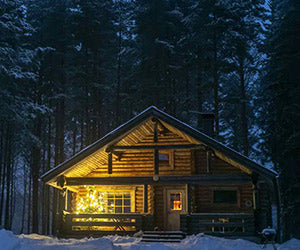The book, and subsequent movie, told the harrowing tale of English climbers Joe Simpson and Simon Yates. After summiting 6,344-meter Siula Grande, the pair encountered bad weather on the descent and Simpson broke his leg. Yates had no choice but to cut Simpson’s rope as he dangled in a crevasse. Simpson crawled and hopped five miles back to base camp and became a legendary figure in tales of mountain survival against all odds.
![Trekking Cordillera Huayhuash, Peruvian Andes]()
But at the foot of the towering peaks of the Huayhuash is a system of trails that circumnavigate the range, offering not nearly as much danger as mountaineering, but excellent trekking, breathtaking views and beautiful campsites. The 137-kilometer loop passes through expansive pampas, past turquoise lakes, waterfalls and pre-Incan ruins, beneath glaciers and over 11 high alpine passes. Trekkers usually take between 10 and 14 days to complete the route, but with the help of a hired team of burros and arrieros or donkey wranglers, it can be accomplished in less time.
![Trekking Cordillera Huayhuash, Peruvian Andes]()
Our group of one Peruvian and six American trail runners completed the Cordillera Huayhuash circuit in six days with guide Jared Vilhauer of Ridgway, Colorado-based Highline Running Adventures. But the route is more commonly undertaken as a multi-day trek.
We began and ended our trip at the tiny town of Llamac, at the home of our lead arriero and cocinero, or cook, Pablo. We set out early on the morning of the first day in an attempt to beat the heat. Although it’s technically winter in Peru, it is also their dry season, which means warm, sunny, dusty days and clear, cold nights. This stable weather pattern, known as the “Andean Summer,” is nearly perfect for trekking.
![Trekking Cordillera Huayhuash, Peruvian Andes]()
After asking the mountain gods, the apus, to keep us safe on our journey, we headed up switchbacks to the first pass. At Punta Llamac at 4,272 meters, we earned our first real glimpse of the snow-covered peaks. The trail then hugs the mountainside in a long traverse and descends down to the valley floor where it winds through grazing cows and the stone huts of shepherds. In this valley lies Laguna Jahuacocha, a high alpine lake where most trekkers spend their first night.
![Trekking Cordillera Huayhuash, Peruvian Andes]()
Then came the twin passes of Sambuya Punta and Rondoy Punta at about 4,750 meters. From here we could make out the bright orange specks of our tents in the valley campsite at Matacancha far below. Our team of burros, horses and arrieros had taken an easier route along a dirt road and were waiting with snacks and tea when we reached camp, after 27 kilometers of running.
![Trekking Cordillera Huayhuash, Peruvian Andes]()
All along the circuit, the campsites were well-utilized by other groups of international trekkers, many of which had also hired teams of guides and burros. Horses were usually hobbled overnight, with their front feet tied together. It meant they could wander about the meadow to graze, but couldn’t stray very far. Donkeys, on the other hand, were not hobbled, but left to roam free. Several mornings began with the shouts of arrieros frantically running around the campsite and scaling the surrounding hills, rounding up their wayward burros.
![Trekking Cordillera Huayhuash, Peruvian Andes]()
The trail then begins a steep but short climb to the northern-most point on the circuit, Cacananpunta. Giant condors soared overhead, riding the thermal updrafts. We then descended through a rolling valley until we came to a gate where two campesinos or countryside shepherds were stationed. At several points along the Huayhuash, runners and trekkers have to pay a small entrance free to the communities located along the route.
![Trekking the Cordillera Huayhuash, Peruvian Andes]()
The origin of the entrance fees goes back to the 1980s when the radical communist organization El Sendero Luminoso or the Shining Path used the Huayhuash region as a remote outpost for its guerilla warfare. The fees were implemented for trekkers to earn the protection of each of the local communities. Now, the area is considered safe and the fee is for maintenance of the campsites, all of which have bathroom facilities, and for the burros and horses to graze on the land. We paid 40 soles (~13 USD) apiece at the entrance to the Jirishanca region.
![Trekking the Cordillera Huayhuash, Peruvian Andes]()
After another small pass, the trail winds down through farmland to the spectacularly beautiful campsite of Carhuacocha. Situated on top of a glacial moraine above an alpine lake by the same name, it lies at the foot of some of the tallest peaks in Peru.
While at Carhuacocha, we heard a crack and roar and looked up to see the glaciers of the country’s second-tallest mountain, Yerupaja, calving. Huge chunks of ice tumbled down the mountain, creating a snowy plume that billowed up all around the sheer face. The mountains were almost two kilometers away, but the sound was still deafening and its echo filled the valley.
![Trekking the Cordillera Huayhuash, Peruvian Andes]()
After two climbs up Siula Punta and Portochuelo de Huayhuash and a long descent, we were able to soak our tired bodies and spirits in the Viconga Hot Springs. There are three steaming pools of varying temperatures and the campsite features campesinos selling Cokes, beer and snacks out of a small building. This was an excellent, if brief, respite from the physical difficulty of the trail.
![Trekking the Cordillera Huayhuash, Peruvian Andes]()
After a night at the hot springs, we began the climb up to the highest point on the circuit: Punta Cuyoc at nearly 5,000 meters. After a steep descent off the pass, the terrain turned mellow and rolling as we made our way down the sleepy river valley of Quebrada Huanacpatay. Some members of the group broke off the main trail and headed on a side trip up San Antonio Pass. The pass offered sweeping 360-degree views of the west face of Siula Grande, the Cordillera Raura to the south and the open, grassy meadows below. The trail continued down valley to the tiny community of Huayllapa.
![Trekking the Cordillera Huayhuash, Peruvian Andes]()
We set out from Huayllapa the next morning accompanied by two more runners: the dogs that had been following our group on and off all trip. In the Peruvian countryside, dogs are used to herd and guard livestock. They are not usually friendly to strangers and can be downright aggressive. In the towns, they are seen more as communal property than pets and the stray street dogs are loyal to whoever will feed and pet them.
![Trekking the Cordillera Huayhuash, Peruvian Andes]()
The trail started with a climb to the first pass of the day, Tapush Punta. The trail then meandered through idyllic alpine meadows where campesinos wearing traditional, colorful Quechua clothing sat by the river while singing a tune and knitting. The second pass of Yaucha Punta marked the final high point at 4,847 meters. It was all downhill from here. After a few miles through cow pastures and dusty trails, we were back at Jahuacocha, the lakeside campsite we passed through earlier on our adventure and where we spent our last night on the Huayhuash.
![Trekking the Cordillera Huayhuash, Peruvian Andes]()
Dinner the last night was a popular Peruvian delicacy called Aji de Gallina, a spicy chicken stew served with hard-boiled eggs over rice and potatoes. Pablo and his sister Sonia had been preparing similar dishes all week, but saved this as a final-night feast. The route on day six involved just 11 kilometers of mostly downhill back-tracking on the trail we came in on, returning to the town of Llamac. We may not have become legendary figures, but we completed Peru's grueling and beautiful Cordillera Huayhuash circuit with grins on our faces.
Heather Sackett is a freelance writer, trail runner and snowboarder living in Telluride, Colorado.





































